Dell XPS 13 Ultrabook Review
Design and Layout
The company calls the XPS 13's panel an "edge-to-edge" display and though there technically is a bit of black bezel under the glass, there is virtually no metal or plastic bezel external to the LCD. The result is that Dell gets 13.30 inches of screen real estate into a 12-inch form-factor. It's a gorgeous 300-nit panel with a native resolution of 1366x768 and, as we mentioned previously, it's Corning Gorilla Glass protected.
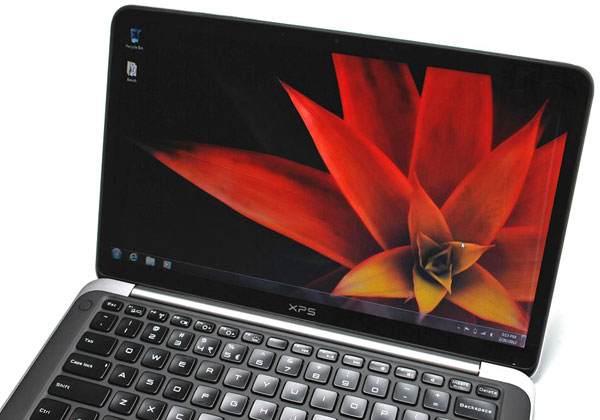






The XPS 13 has a nice brushed aluminum lid and its carbon fiber construction around the base feels solid as well. It's a sharp machine with minimalistic lines and not much gloss except for the LCD and keyboard. Interestingly, Dell also fashioned a metal cover plate on the underside of the machine, to protect your Microsoft license label and Dell service tag.


Though viewing angles are decently wide with this panel, we wish Dell could have figured out a way to allow the screen just a few degrees more backwards tilt, to afford an optimal viewing angle when the machine is perched on a counter top and you're standing over it. Streaming Pandora in the kitchen while whipping up a little chow for dinner, we were itching to push the XPS 13's panel back just a touch more.
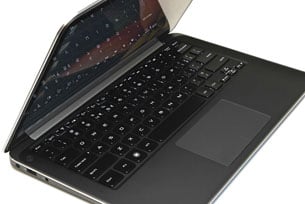
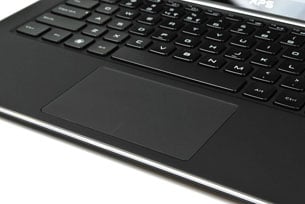
YES. Backlit keyboard. It's the little things that make the difference and Dell was listening. Beyond backlighting, the keyboard itself is a bit of a mixed bag. The XPS 13's key caps feel plasticy under pressure and while there is no flex in the keyboard itself, key travel feels shallow. The layout is nice and spacious, however, and it doesn't take long to get up to full speed on XPS 13's keyboard. It may not have the same high quality feel as the Asus Zenbook or Lenovo's U300s (review forthcoming) but it's not bad either. But yes, it's backlit. Can we praise that enough?
The palm rest area is a magnesium alloy, according to Dell, and the large touchpad area has gesture support. The touchpad has a really nice soft feel with just the right amount of tactile click in its integrated two-button control. It doesn't feel cheap or flimsy at all, as we've seen with too many touchpad solutions. Nicely done. All told it's one of the better touchpads we've used but gesture support is so-so, with the occasional accidental mouse click while performing pinch/zoom functions.
The palm rest area is a magnesium alloy, according to Dell, and the large touchpad area has gesture support. The touchpad has a really nice soft feel with just the right amount of tactile click in its integrated two-button control. It doesn't feel cheap or flimsy at all, as we've seen with too many touchpad solutions. Nicely done. All told it's one of the better touchpads we've used but gesture support is so-so, with the occasional accidental mouse click while performing pinch/zoom functions.
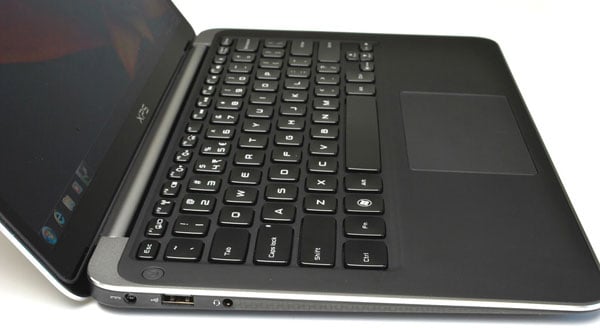
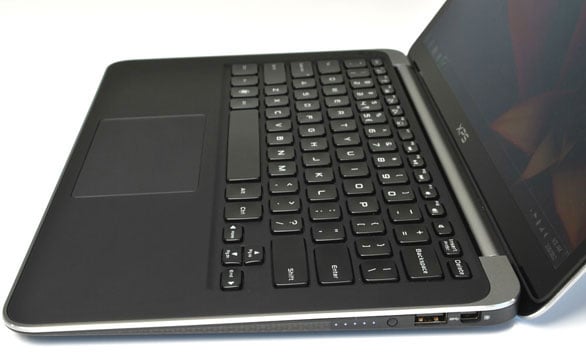
There aren't an over-abundance of ports on the XPS 13 but then again, ultrabooks don't exactly have much real estate for them. With this machine you have one USB 2.0 port, a USB 3.0 port, a mini DisplayPort and a headset jack. DisplayPort may be the future for external monitor connectivity but somehow we wish HDMI was available here instead or in addition to it. Dell also includes a fancy battery level indicator, similar to Apple's approach, with a single button that illuminates a series of five small LEDs on the right edge of the machine. It's all well and good but PC folks are smart enough to look at the battery level indicator in the Windows system tray, right? Oh, that was a zinger. Sorry.
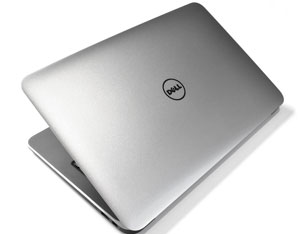

The XPS 13 has a nice brushed aluminum lid and its carbon fiber construction around the base feels solid as well. It's a sharp machine with minimalistic lines and not much gloss except for the LCD and keyboard. Interestingly, Dell also fashioned a metal cover plate on the underside of the machine, to protect your Microsoft license label and Dell service tag.
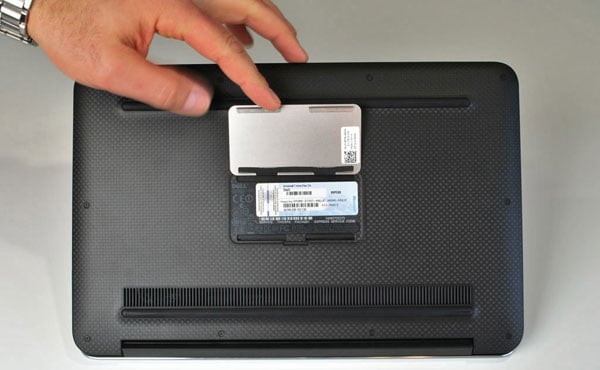
All told, this razor-thin, slightly rounded beauty really does inspire a top-shelf experience all around, though we do have one more gripe we need to vent (badump-bump). Dell's bottom side ventilation system and exhaust fan isn't optimal. We've seen side and rear venting in competitive ultrabook designs. Frankly, though it does a decent job keeping the palm rest area cool, venting on the bottom side of the machine (a place that will likely be partially blocked on your lap or less than flat surface) is the least desirable approach in our opinion. To make matters worse, the XPS 13's fan is too whiny for our comfort. The XPS 13 is the loudest ultrabook we've tested to date, either under load or at idle. It's also the fastest, as you'll see in the pages that follow, but really, we wish it was a little more audibly subdued. Is it a deal breaker for us? No, not by a long shot, but if this area pegs your importance meter, you might want to hear it in person first.






